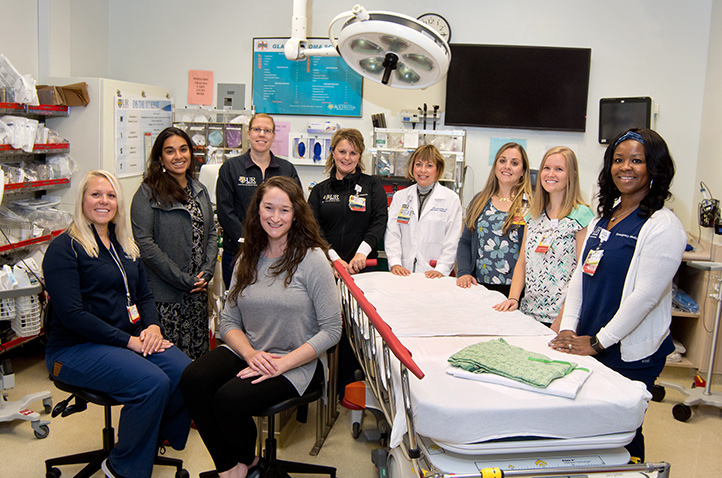Nicole M. Acquisto, Pharm.D., FCCP, BCCCP, Rachel F. Schult, Pharm.D., DABAT, Colleen Davis, M.D., Rebecca Dolce, M.S., R.N., CEN, Nels Grauman, D.O., Michele Handzel, Pharm.D., Courtney Jones, Ph.D., Michael Kamali, M.D., Molly McCann, M.S., Aekta Miglani, M.D., Marcy Noble, R.N., Mandy Oplinger, Pharm.D., Blake Porter, Pharm.D., Sandra Sarnoski-Roberts, M.D., Monica Seaman, M.S., R.N., Heidi Springer, N.P., Rebecca Stott, B.S.N., R.N., Shawntia Washington, M.S., R.N., Timothy Wiegand, M.D., Jaclyn Wilmarth, M.S., R.N., CPPS, Maryam Zaeem, Pharm.D.
Opioid exposure is one contributor to the opioid epidemic. Approximately 16% of patients receiving more than a one-week supply of opioids and 6% receiving a one-day supply report continued use after one year. A focus on safe prescribing practices is necessary. We sought to develop and implement emergency department (ED) opioid use guidelines, non-opioid treatment pathways, and staff tools and education.
An interdisciplinary task force of pharmacists, physicians, and nurses led by Emergency Medicine (EM) and Toxicology Clinical Pharmacy Specialists was convened in February 2017. Goals for the team were to reduce overall emergency department (ED) opioid use and discharge prescriptions by 30% in the adult and pediatric EDs by January 2018. The team developed several documents and pathways including opioid prescribing guidelines, adult and pediatric alternatives to opioid therapy, pain management for patients with opioid dependence, treatment of opioid withdrawal, naloxone prescribing, standard phrases for the electronic medical record, and talking points for patient discussions. Following an educational campaign for staff and patients, the program was implemented in November 2017.
From January 2017 to January 2018 ED opioid orders were reduced by 51.5% and discharge prescriptions by 52.5%; 236.1 vs. 114.6 orders and 90.6 vs. 43.2 prescriptions/1000 patient visits. In the same time period, emergency observation unit opioid orders were reduced by 55.8% and discharge prescriptions by 77.5%; 156.2 vs. 69 orders and 18.7 vs. 4.2 prescriptions/100 patient stays. Almost 60,000 orders and discharge prescriptions between May 2016-2018 were evaluated in three groups; pre- (May 2016-Jan 2017), mid- (Feb-Nov 2017), post-implementation (Dec 2017-May 2018). ED opioid orders and discharge prescriptions decreased with a monthly mean of 269.2, 177.6, and 113.9 orders and 86.5, 59.1, and 36.3 prescriptions/1000 patient visits in the pre-, mid-, and post-implementation groups, respectively, p < 0.001. When an opioid was prescribed, the percent of hydromorphone/oxycodone (more euphoria) and combination opioid/acetaminophen products was decreased, 38.7% vs. 35% and 68 vs. 44.3%, respectively, p < 0.001. There was also a mean 464 prescribed tablets/month reduction and a 20% reduction in the number of tablets prescribed per prescription between the pre- and post-implementation groups, p < 0.001. Sustainability initiatives (e.g., optimization, continued data analysis and dissemination, development of an opioid smart ED quarterly newsletter, new hire orientation education) and expansion beyond the ED continue.
Interdisciplinary efforts led to an over 50% reduction in ED opioid orders and discharge prescriptions in one-year. Clinical pharmacists are effective leaders for opioid reduction programs at large institutions.
>
